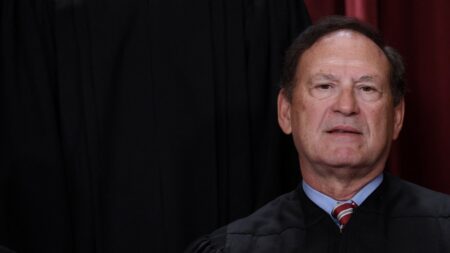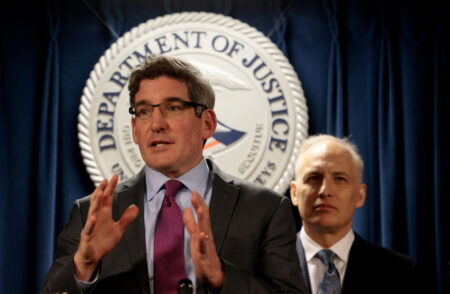Music critics have had enough. Taylor Swift, they say, is making too much music.
With the recent release of “The Tortured Poets Department,” Swift has now released four new studio records as well as four re-recordings of her earlier records since 2020 — often with additional surprise songs. Of course, she’s also headlining the biggest concert tour in human history, the movie version of which is the highest-grossing concert film of all time.
To many (although not to her legions of fans), it’s excessive. Swift, they argue, is watering down the quality of her art with her “near-constant stream of music.” The albums don’t sound different enough from one another to satisfy some critics. And to others, like Vanity Fair’s Chris Murphy, Swift’s new album is “a brazen attempt to completely saturate and dominate a market.”
But comparing Swift to tech monopolists, accusing her of inappropriately using her market power to make us buy things we don’t need, misunderstands the economics of creativity and intellectual property. Taylor Swift is an increasingly rare economic outlier who continues to make music long after she needs to. Her prodigious output is, in fact, something of a throwback to an earlier generation of artists like the Beatles and Bob Dylan.
Making music is expensive. Training, instruments and studio time all cost money. Perhaps more importantly, professional musicians pass up the chance to work in other professions as doctors, lawyers, or engineers.
Enter copyright law. Copyright exists to encourage some people to forego these and other valuable opportunities for the chance to make a living by entertaining us. It gives them exclusive rights, and the chance to charge supra-competitive prices for their art, to persuade them to create.
If giving people money encourages them to create, then surely giving them more money would encourage them to create more music, right? As one of us has documented empirically, the answer is actually no. Throughout music history, copyright’s incentive has often been dialed up too high and, counterintuitively, has led to less creativity.
In the early 1960s, the best-selling musical artists typically released an album or more a year. The Beatles, for example, released their first studio album, “Please Please Me,” in March 1963 and their final studio album, “Let It Be,” in May 1970. In just eight years, they produced a total of 12 studio albums (not to mention four films).
Bob Dylan released 15 studio albums from his 1962 self-titled debut to 1975’s “Blood on the Tracks.”
Productivity was high because revenue was low. In 1962, the total revenue in constant, inflation-adjusted dollars, from record sales in the United States was less than $5 billion. If artists wanted to earn a living from music, they had to work for it.
As time moved on, society became wealthier, and the revenue from record sales increased. According to the Recording Industry Association of America, revenue from record sales had risen above $15 billion in constant dollars in the 1970s. It fell back to $11.5 billion during the 1982-1983 recession. But beginning in 1984, with the improvement of the economy and the introduction of the CD, revenue from record sales rose to a peak of over $25 billion in constant dollars in 1999.
As revenue rose, artist productivity fell. Instead of one album or more per year, the best-selling musical artists began releasing an album every other year, or every third year. Whitney Houston, for example, released her first studio album, “Whitney Houston,” in February 1985, and over the next 10 years released only two more.
Had the Beatles been recording in the 90s, their productivity may well have been half as high. Which albums are you willing to lose?
By the early 2000s, unlicensed file-sharing on sites like Napster seemed to threaten the recording industry’s very existence, but, counterintuitively, the diminished revenue actually spurred more musical creativity.
After peaking in 1999, record sales revenue had fallen to only $8.6 billion in the United States by 2015 a level not seen since the 1960s and less than a third of its peak. Pundits proclaimed the death of the music industry.
Yet, precisely the opposite happened. Less money meant more and better music. From the late 1990s, when music revenue peaked, to the early 2010s, when music revenue was at its lowest in decades, the number of albums released in the United States annually more than doubled. And if we measure music quality by how often people choose to listen to a song, quality increased significantly as well.
It is easy to mistake copyright for a system designed to support musical artists. From that perspective, more copyright means more money, and if more money is the whole point of the system, then more copyright is always the right answer.
But now, with streaming revenue creating another peak in industry profits, many musicians are — quite rationally — making less music. Since Taylor Swift released her first of 11 entirely new albums in 2006, Justin Timberlake has managed a measly four. Lorde has produced only three albums since 2013 to Swift’s seven new albums.
We leave it to the critics to determine the quality of Swift’s new work (although we admit to being fans), but she shouldn’t be faulted merely for her prodigious output. We should be thrilled to have an artist who continues to create long after she has made enough money for several generations of her family to never have to work.
If there’s a problem here, it’s a copyright system that over-rewards the Timberlakes of the world, relaxing at their beach houses, while thousands of other musicians struggle to make ends meet. Surprisingly, if the question is how to ensure that artists remain productive, the answer may be less, rather than more copyright.
For example, rather than last for a fixed and very long period, a song’s copyright could last only until an artist has had a reasonable opportunity to recoup her costs, as one of us has proposed.
But, whether we adopt this solution or some other, we should not rely on the outliers such as Taylor Swift alone to supply us with the music that brings us such joy.
We must recognize the link between too much copyright, too much money, at least for the top artists, and too little music.
Christopher Buccafusco is the Edward and Ellen Schwarzman distinguished professor at Duke Law School. Glynn S. Lunney, Jr. is a university distinguished professor and associate dean for Faculty Research & Development at Texas A&M Law School.
Copyright 2024 Nexstar Media Inc. All rights reserved. This material may not be published, broadcast, rewritten, or redistributed.
Read the full article here











